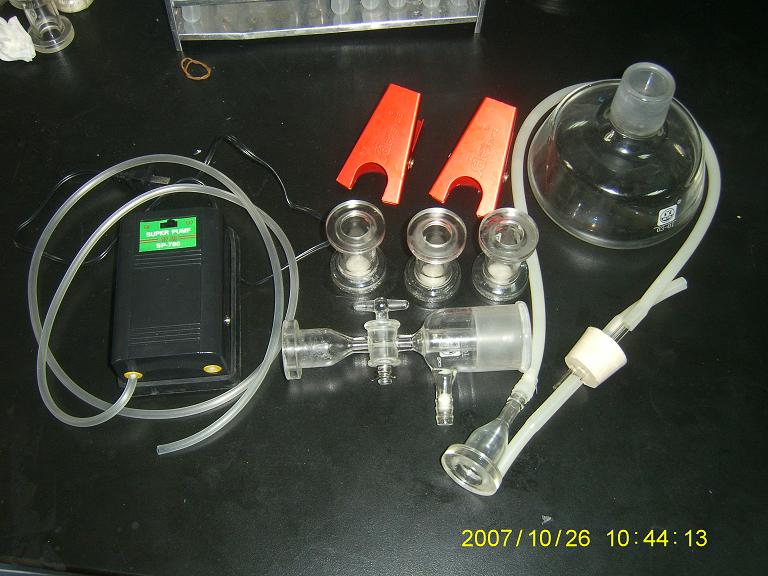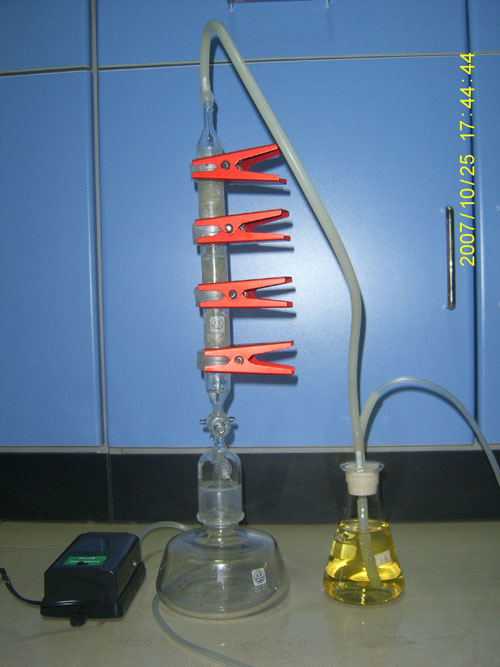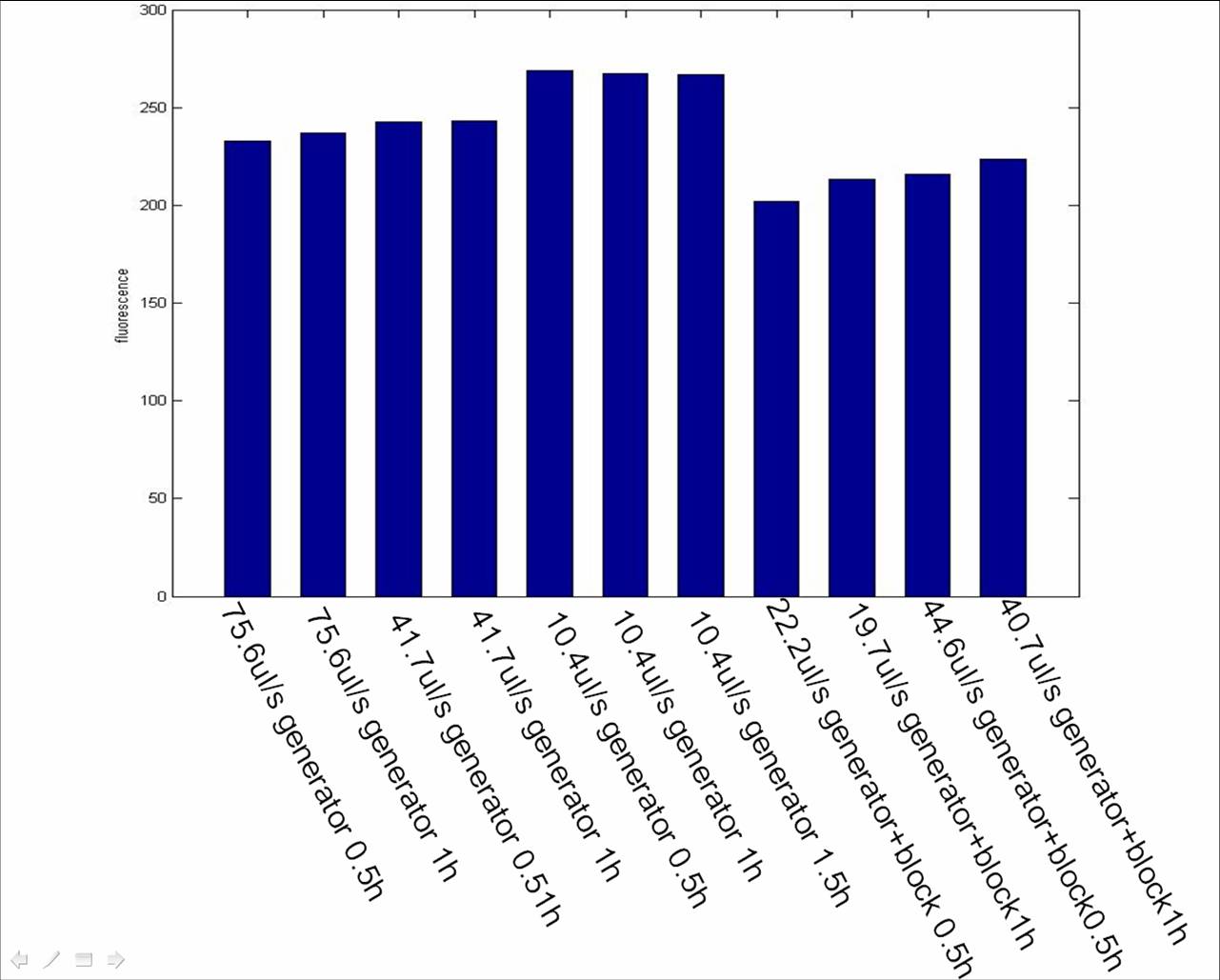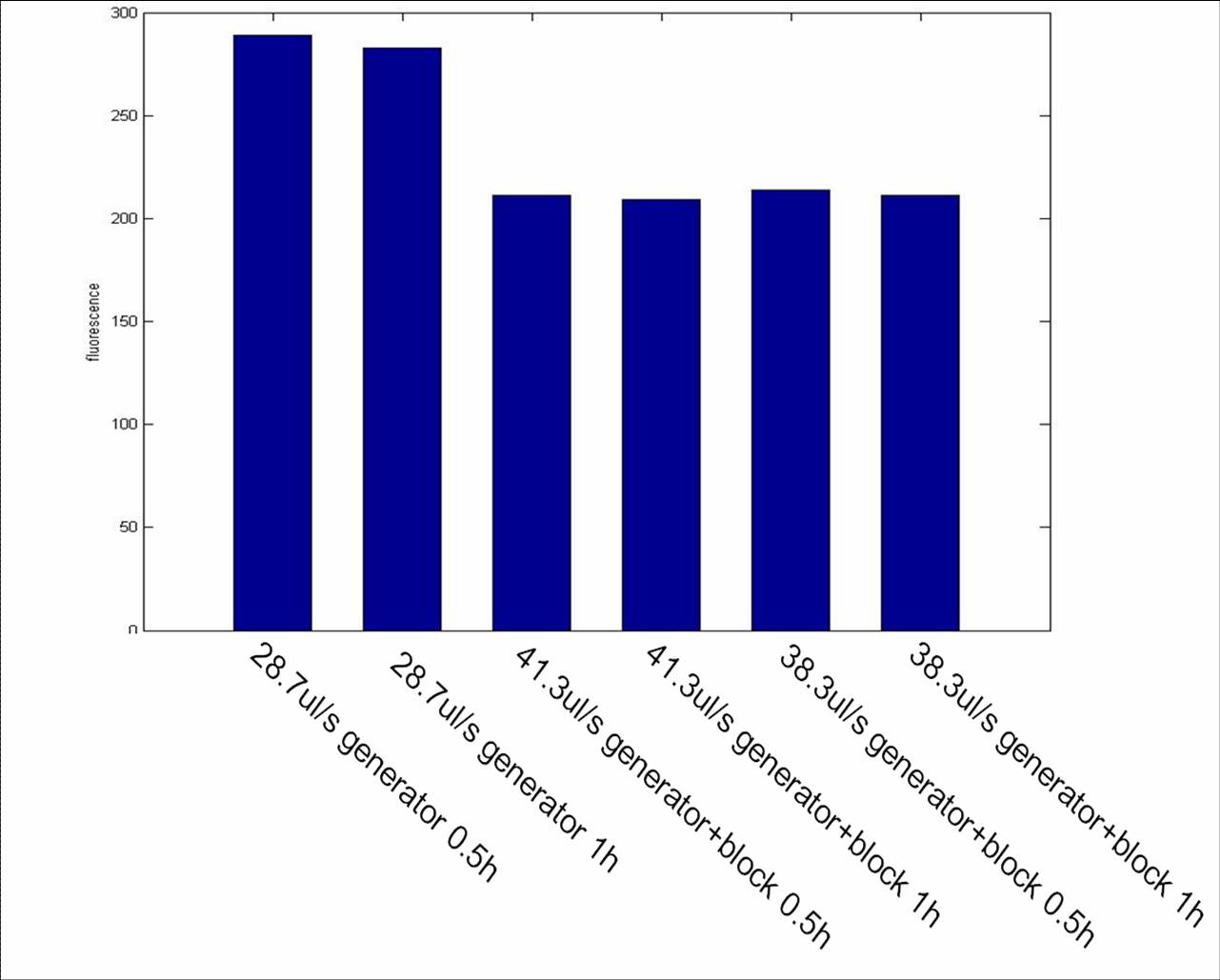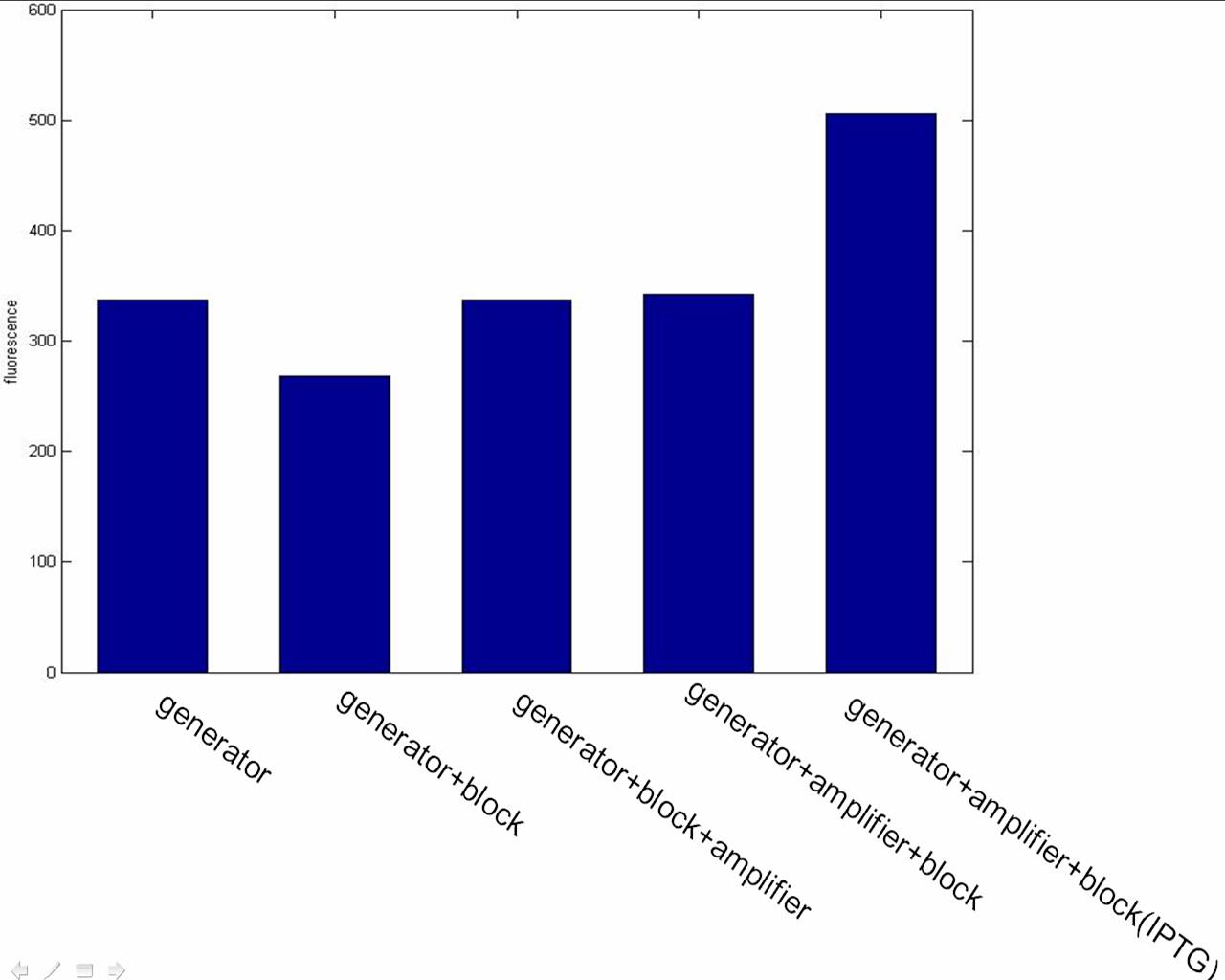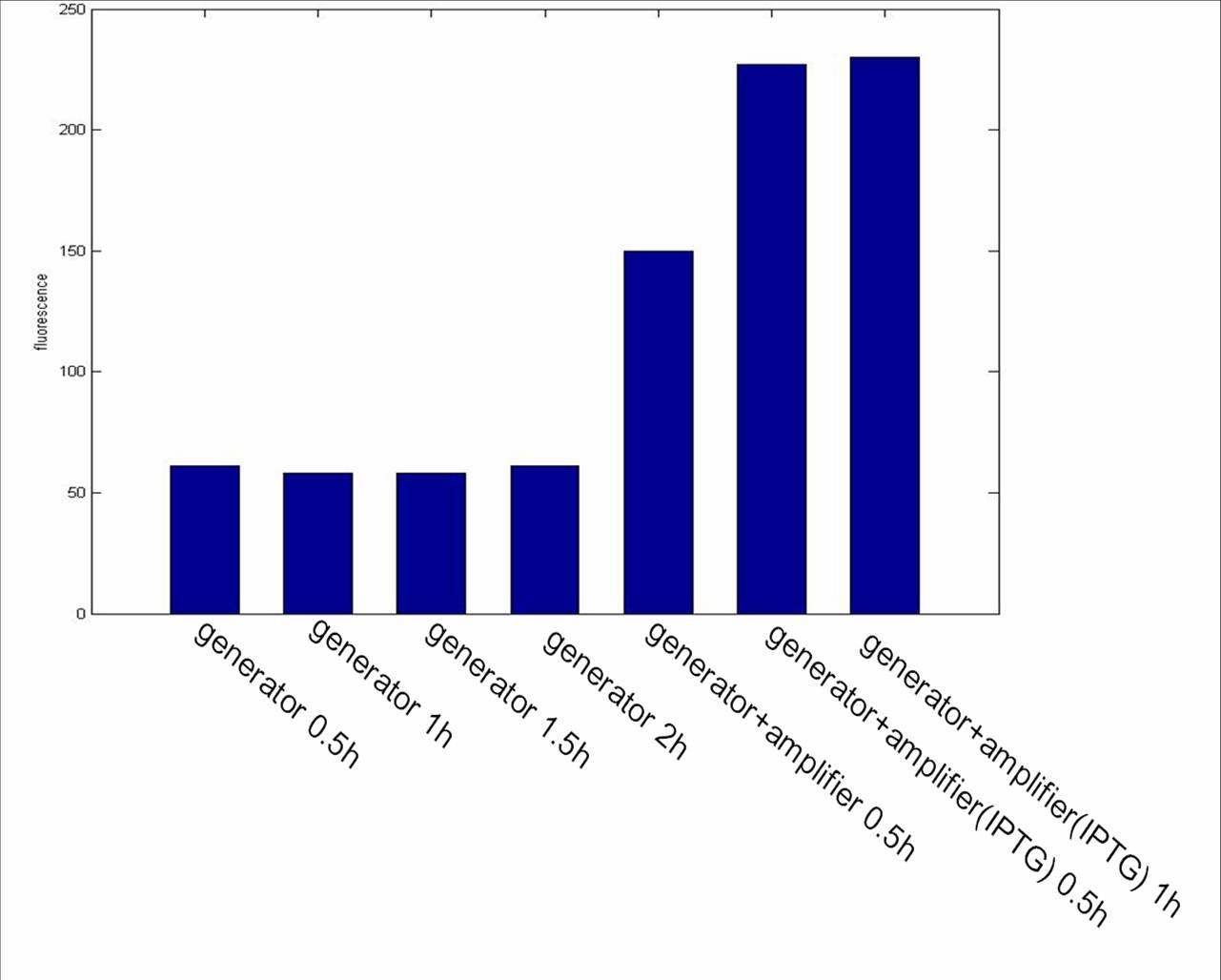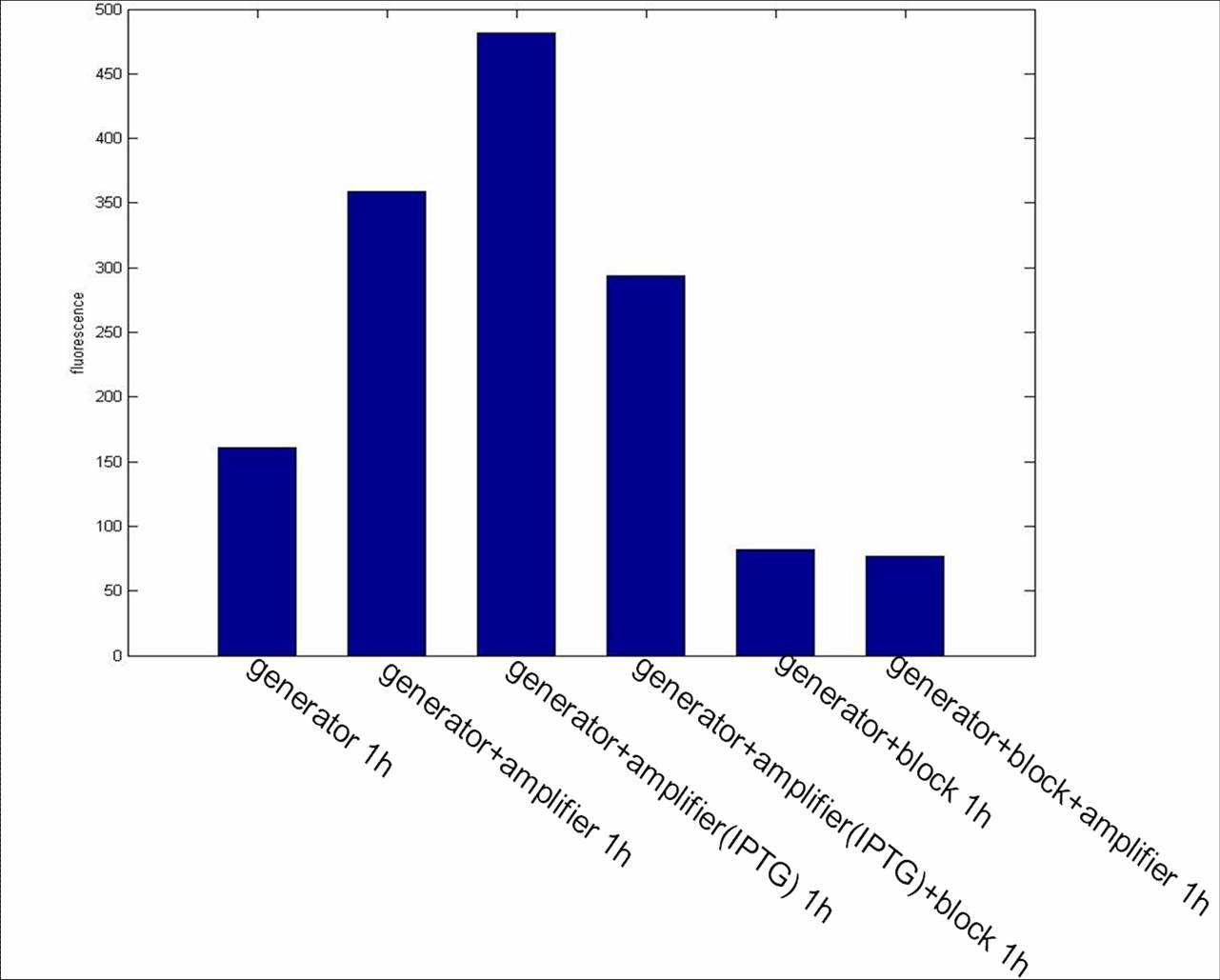Tianjin/DIODE/Experiment2
From 2007.igem.org
Lovecarrot (Talk | contribs) (→Introduction) |
Sunlovedie (Talk | contribs) |
||
| Line 1: | Line 1: | ||
{| | {| | ||
==Introduction== | ==Introduction== | ||
| - | |||
==Equipment == | ==Equipment == | ||
| + | In order to imitate the actual diode and for fun, we construct an equipment by using the principles of chemical engineering. This 'diode' mainly consists of three consecutive hollow columns fulfilled with immobilized beads, at the boundries of two of which is a ground glass surface permitting the flow of culture but not the immobilized beads. The top column is connected with a flask containing liquid culture(usually LB)by a hosepipe and the bottom column is tied to a valve which could control the rate of flux. The liquid culture is driven by a pump to pass through the three consecutive columns and under the condition of positive-biased, the AHL produced by the generater cells are brought to the second column filled with amplifier cells and then the third column filled with block cells. Under the condition of negative-culture the positions fo amplifier cells and block cells are reversed. The solution passing through the third column is collected by a small container which is used for further analysis of AHL contents. | ||
| + | <br> | ||
| + | <br> | ||
[[Image:TJUcolumn.jpg|500px]] <br> | [[Image:TJUcolumn.jpg|500px]] <br> | ||
[[Image:TJUcolumn1.jpg|400px]]<br> | [[Image:TJUcolumn1.jpg|400px]]<br> | ||
| Line 25: | Line 27: | ||
Figure 4:We test generator cells together with the amplifier cells at flux rate of 55.6ul/s .The result shows that the concentration of AHL become higher when amplifier cells together with IPTG were added.<br> | Figure 4:We test generator cells together with the amplifier cells at flux rate of 55.6ul/s .The result shows that the concentration of AHL become higher when amplifier cells together with IPTG were added.<br> | ||
[[Image:tjuex304.jpg|500px]]<br> | [[Image:tjuex304.jpg|500px]]<br> | ||
| - | + | <br> | |
| - | + | <br> | |
| + | Figure 5: | ||
| + | [[Image:tjuex305.jpg|500px]]<br> | ||
|} | |} | ||
